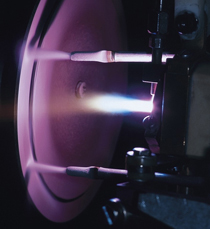Cooling for Metal Fabrication
Temperature control, an essential factor

Many processing steps apply heat to the workpiece. This can affect dimensions and material structure. Cooling time is required to exclude the possibility of overheating. The cooling window can be reduced if carbon dioxide (CO
2) snow or liquid nitrogen (LIN) are used as cooling agents.

